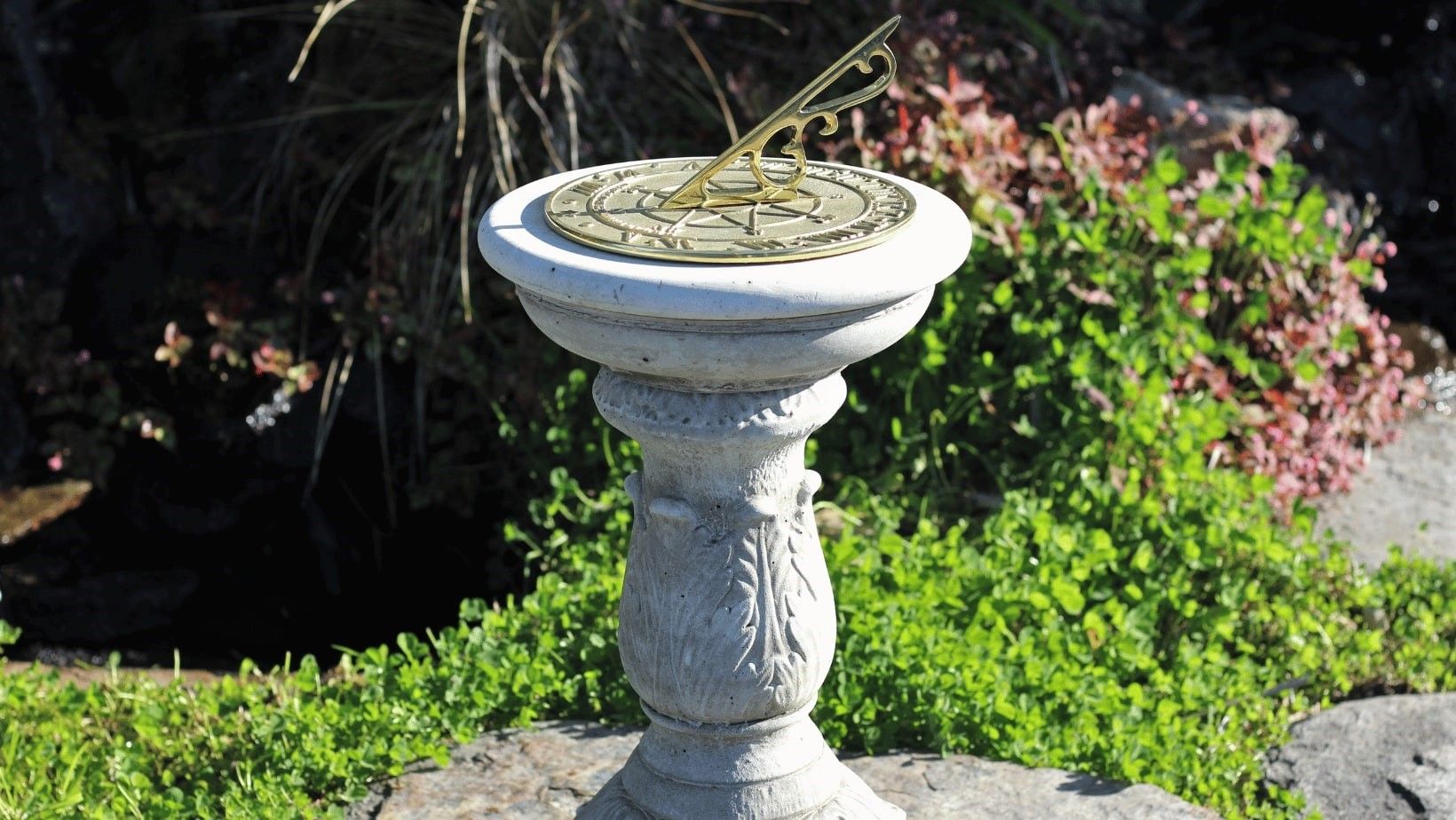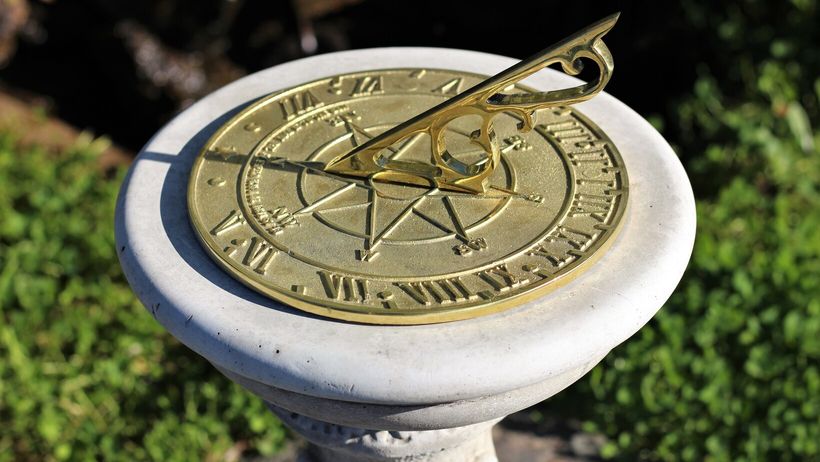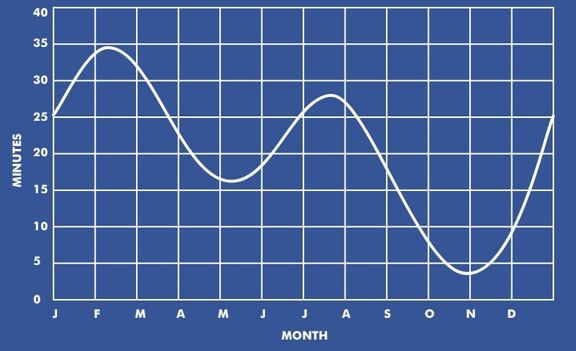How to: Horizontal Sundials
How to: Horizontal Sundials
Get the Guide: A Guide to the Horizontal Garden Sundial
Sundials are one of the most ancient instruments used for measuring time, having a history going back over two thousand years. They have no moving parts, but by moving with the earth itself, it can measure the Earth's rotation in a 24-hour period relative to the sun.
The horizontal sundial consists of:
- A dial plate marked off in hours
- The gnomon (pointer) which sits on the dial and projects at an angle toward the celestial pole. We are in the southern hemisphere therefore the high point of the gnomon faces south.
The angle of the gnomon should be equal to the latitude at which the sundial is to be used, eg., Auckland sits at a latitude 36.5 degrees south so its angle would be 36.5 degrees.
NB: In the southern hemisphere the sun is to the north with its apparent direction of travel being from east to west. The dial is read with morning readings to the left and afternoon to the right when facing north.
Setting up the Sundial
The pedestal or plinth on which the sundial sits should be set vertically, with the top plate horizontal. The dial is turned until the gnomon (triangle) points toward True North if you're in the Northern hemisphere, or True South for the Southern hemisphere.
To find true north/south, one method is to use a compass. The compass however points to magnetic N/S so for most of NZ a variation of approximately 23 degrees east must be compensated for.
The north/south meridian can be checked by observing the shadow cast by the gnomon at noon, which should lie directly on the 12 o'clock mark of the Equatorial ring (the dial plate) ie., at the true solar time rather than a watch/clock time. The time difference can be calculated - refer to the next section.
Telling the Time
The shadow cast by the gnomon onto the dial plate gives us a reading of "True Solar Time". Solar Time, however, varies by small amounts each day throughout the year relative to our watch/clock or phone time.
The world is divided into 24 time zones of one hour and the sun travels across the sky at the rate of 15 degrees per hour (i.e. 360° divided by 24 zones = 15° per zone), so we can calculate, that if the sun travels 360 degrees in 24 hours, it will travel 1 degree every 4 minutes. NZ is approx 5 degrees west of its designated 180-degree time zone, therefore, the sun's shadow reading on the sundial would be (4mins x 5°) 20 minutes after our watch time.
However, there is another adjustment to be taken into consideration, which is a time difference due to the fact that the earth moves around the sun in an elliptical plane which varies the transit time each day throughout the year by a few minutes and is called "The Equation of Time".
To sum it up: To relate the sundial time accurately to watch time we need to do a small calculation. Using the longitude differential of +20 minutes and a figure taken from the "Equation of Time graph" which can vary between +15 to -15 minutes depending on the time of year, we can, by combining these two variants, finally arrive at a figure that shows watch time is fast by between 5 and 35 minutes from the time indicated by the suns shadow on the dial. Refer to the below for a combined time correction graph.
Total Time Correction for Auckland
This graph combines "the equation of time correction" with the longitude correction for Auckland of +20.66 minutes (Latitude 36.8 deg. South - Longitude 174.8 deg. East). It shows the number of minutes to add to your sundial reading in order for it to relate to our watch time.
Example: July 1st = 25.6 minutes.
This indicates that when the shadow on the sundial reads 2pm the actual watch time will be approximately 25 minutes past 2pm (2:25pm).
During daylight savings, add one extra hour.
Use this guide to help you set up and read your sundial or download our printable guide to come back to this handy graph whenever you need.
If you enjoyed this guide, you might also enjoy:




